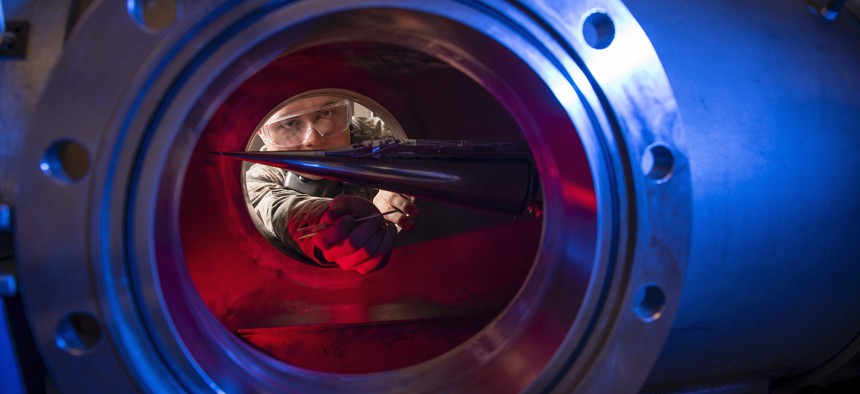
Cadet 2nd Class Eric Hembling uses a Ludwieg Tube to measure the pressures, temperatures, and flow field of various basic geometric and hypersonic research vehicles at Mach 6 in The United States Air Force Academy's Department of Aeronautics. U.S. Air Force photo/Joshua Armstrong)
DOD Funds an Academic Consortium of Hypersonic Researchers to Outdo China
The field is so new that it needs experts from many fields to learn to work together.
Building hypersonic weapons in 2020 is a bit like building computers in the 1950s. One day, it will be its own specific field — but today it requires finding and convening experts from multiple discrete disciplines. Defense Department leaders hope they can accelerate this process by funding a new academic consortium led by Texas A&M University. The contract award is $20 million annually for five years.
China has already begun to establish multidisciplinary university programs that bring together students in, say, materials development or aerodynamics to design and test new hypersonics designs.
“As a student, you could be exposed to every aspect of hypersonic vehicle design” in China, said Gillian Bussey, the director of the Joint Hypersonics Transition Office, in a Monday call with reporters. “Some of these universities are actually designing and flying vehicles. I have to think that’s done amazing things for their workforce and may be part of the reason they’ve had a lot of their success with their programs.”
Bussey pointed to a recent paper from a Chinese research group. “They were taking into consideration radar cross-section and survivability as well as aerothermodynamics. They would take that vehicle into a wind tunnel, verify the performance,” she said. “We’re trying to replicate multi-disciplinary projects like that.”
The new consortium will give students experience not just in building parts of hypersonic craft but the whole thing, giving them experience beyond just their disciplines.
Established in April with $100 million in 2020 funding, her office has set six research priorities: materials; guidance, navigation and control; propulsion (airwing); environment (what is the vehicle experiencing); applied aerodynamics and systems engineering; and lethality and energetics (the warheads, etc.). The office hopes to announce 26 project solicitations in coming weeks, mostly to advance understanding of these priorities as applied to hypersonics.
NEXT STORY: Mapping Agency Wants to ID Locations by Sound




